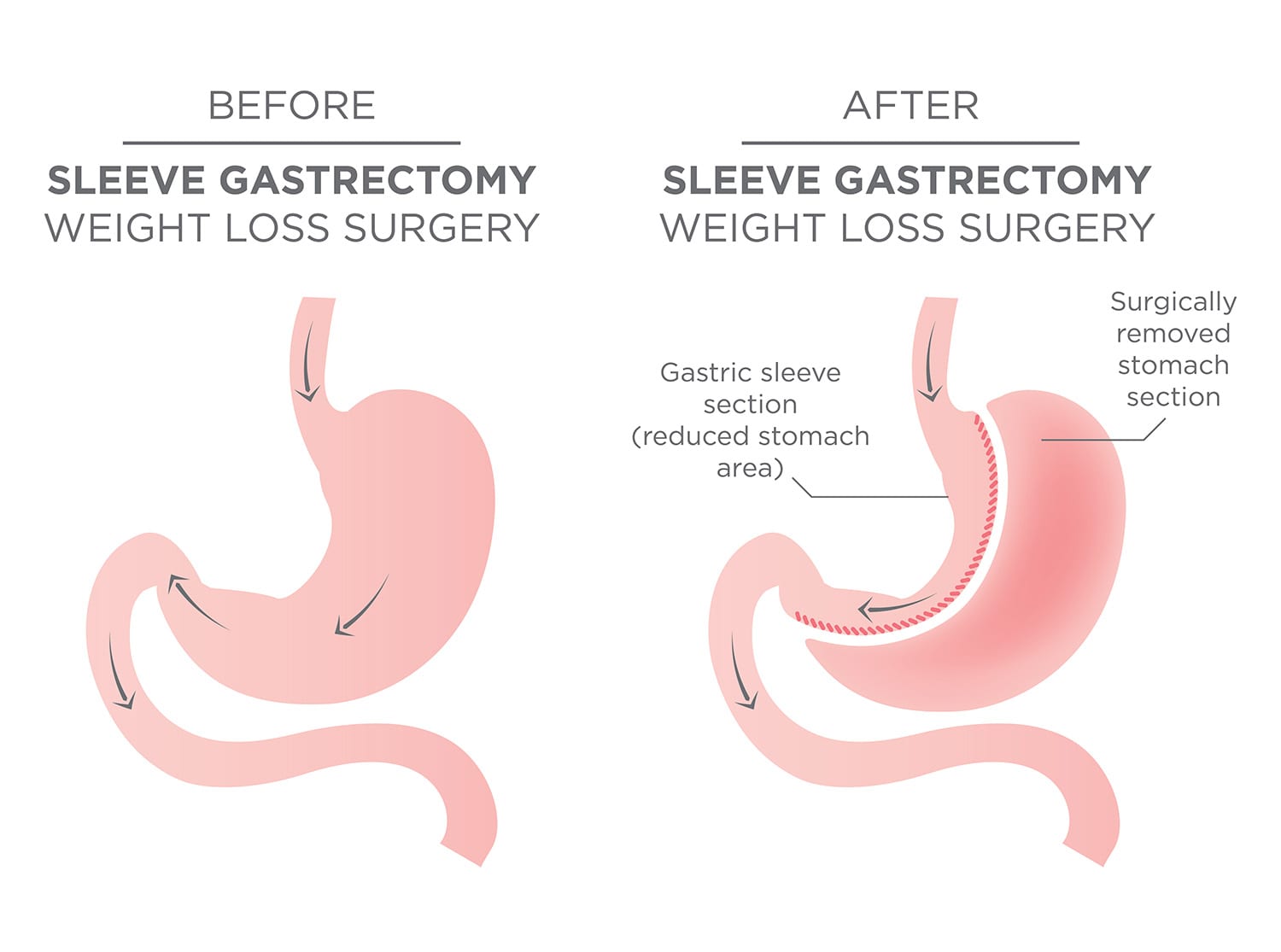
Sleeve Gastrectomy is one of the most common weight loss procedures performed in Australia and worldwide. The stomach size is reduced by 70-80% to reduce its storage capacity with the help of Keyhole surgery, so you feel full with small portions. Though it seems like a restrictive procedure, it also induces hormonal changes in the gut to make you feel less hungry. Usually, excess weight loss is expected to be around 60-70% (Individual results can vary, though). The best outcomes are achieved by combining surgery with lifestyle modifications like diet and exercise.
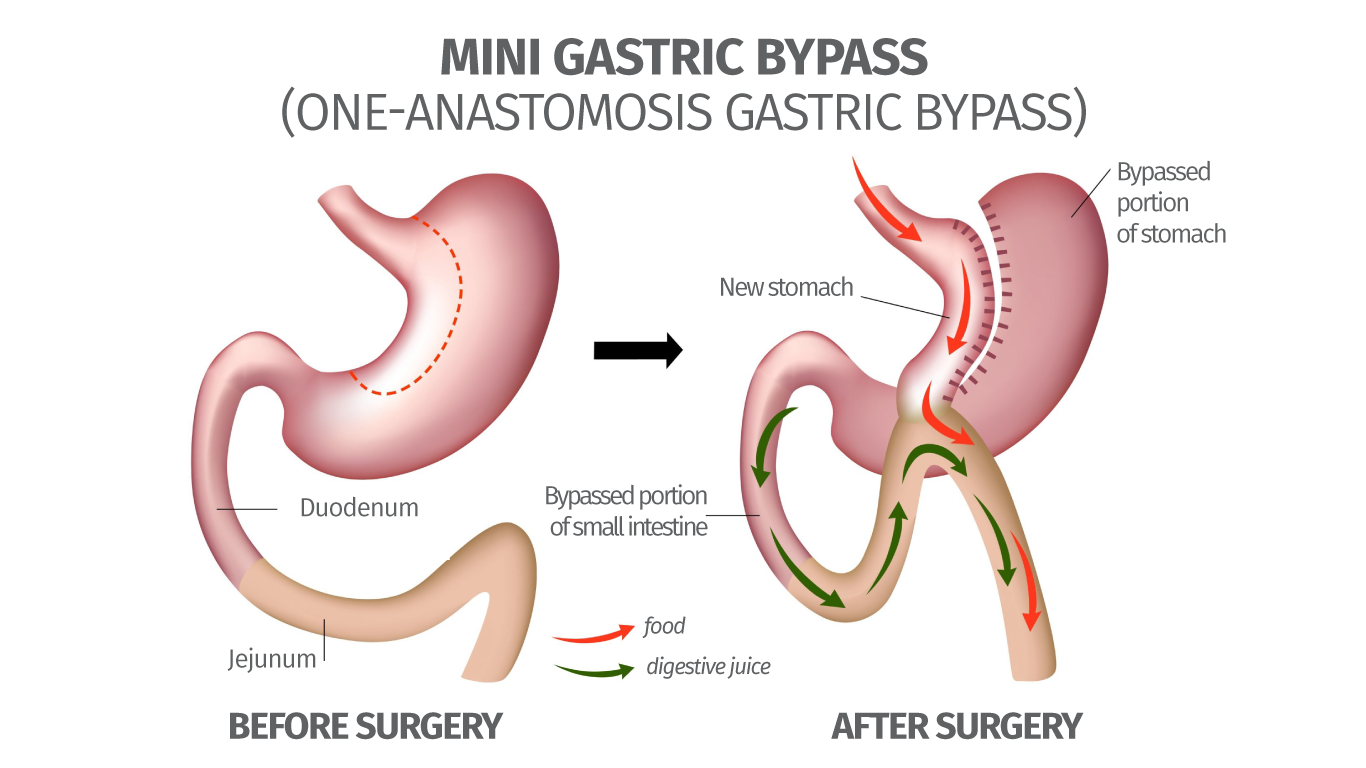
This procedure is becoming more popular. The American Society of Metabolic and Bariatric Surgeons recently endorsed this procedure. This procedure is similar to Roux en Y Gastric Bypass but involves forming only one anastomosis between the stomach and jejunum ( part of the small Bowel). This procedure induces weight loss similar to RYGB. Some studies have shown better weight loss with this procedure than RYGB. Its risk profile is identical to RYGB, except for an increased risk of Bile reflux. However, this can be dealt with easily by converting it to RYGB.
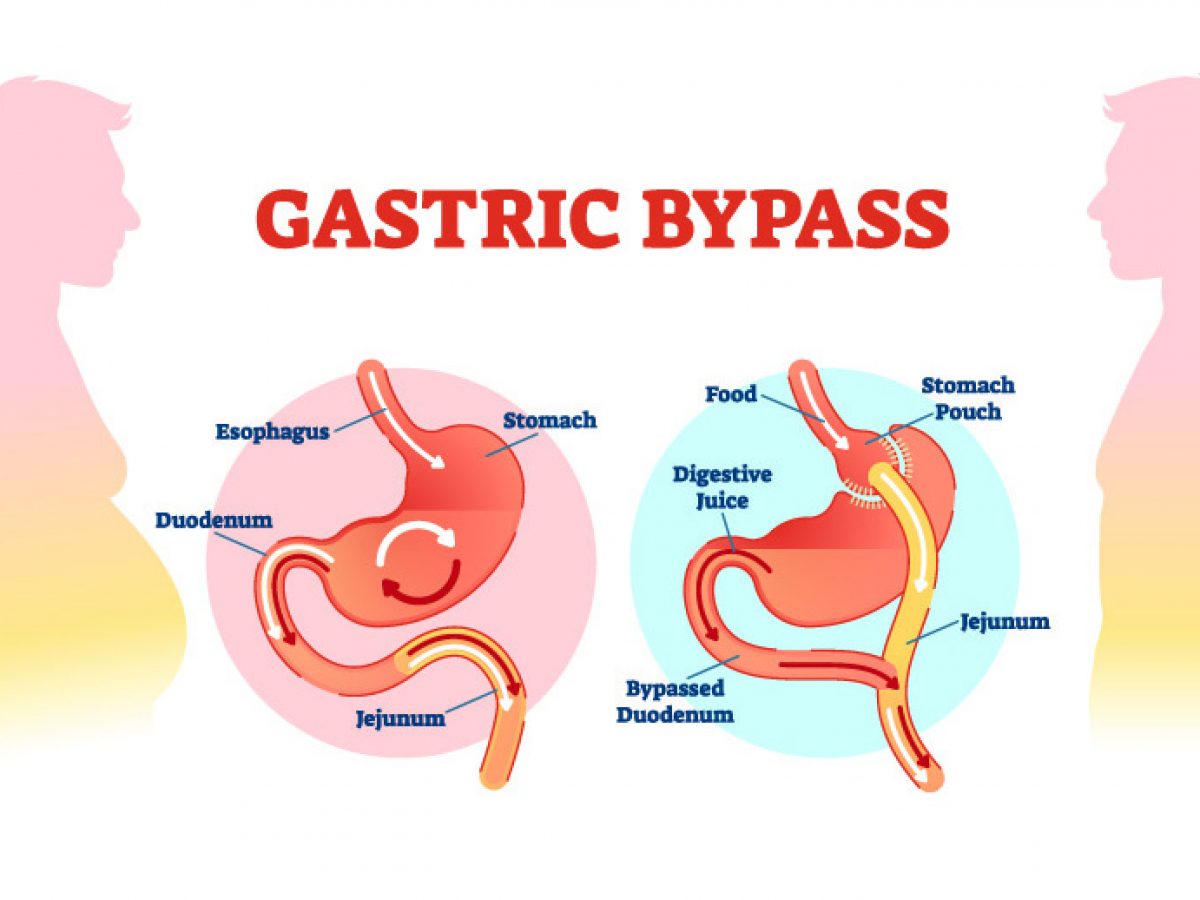
Roux-en-y gastric bypass is a restrictive-malabsorptive operation for weight loss. It is the second most common procedure in Australia, and around the world, and in some countries, it is the most common type of weight loss surgery. Gastric bypass is usually performed via laparoscopic (Keyhole or robotic techniques. The general steps of Roux-en-Y-gastric bypass (RYGB) include 1) gastric pouch creation, 2) creation of biliopancreatic limb, 3) jejunojejunostomy creation, and 4) creation of gastrojejunostomy. This procedure induces weight loss through multiple mechanisms. The expected weight loss can be up to 80-85% of excess body weight, though individual results can vary. This procedure has a higher risk of diarrhoea, malnutrition and vitamin deficiencies. Therefore, patients must follow all of our team's instructions.
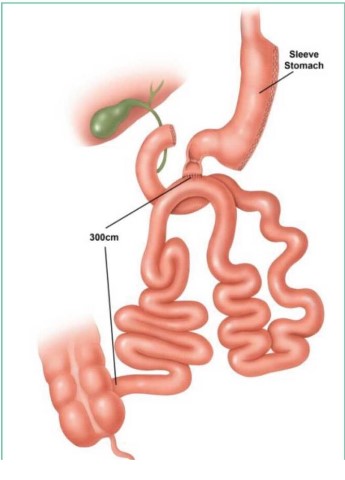
This procedure has two critical steps: first, performing sleeve gastrectomy, and second, connecting the first part of the Bowel, which is the duodenum, to the small Bowel further downstream (usually leaving only 300 cm of the small Bowel as a common channel for absorption). This procedure induces excellent weight loss, but it comes with a high risk of Chronic diarrhoea and malnutrition. Patients do require intensive surveillance and supplementation, as with other bypasses.
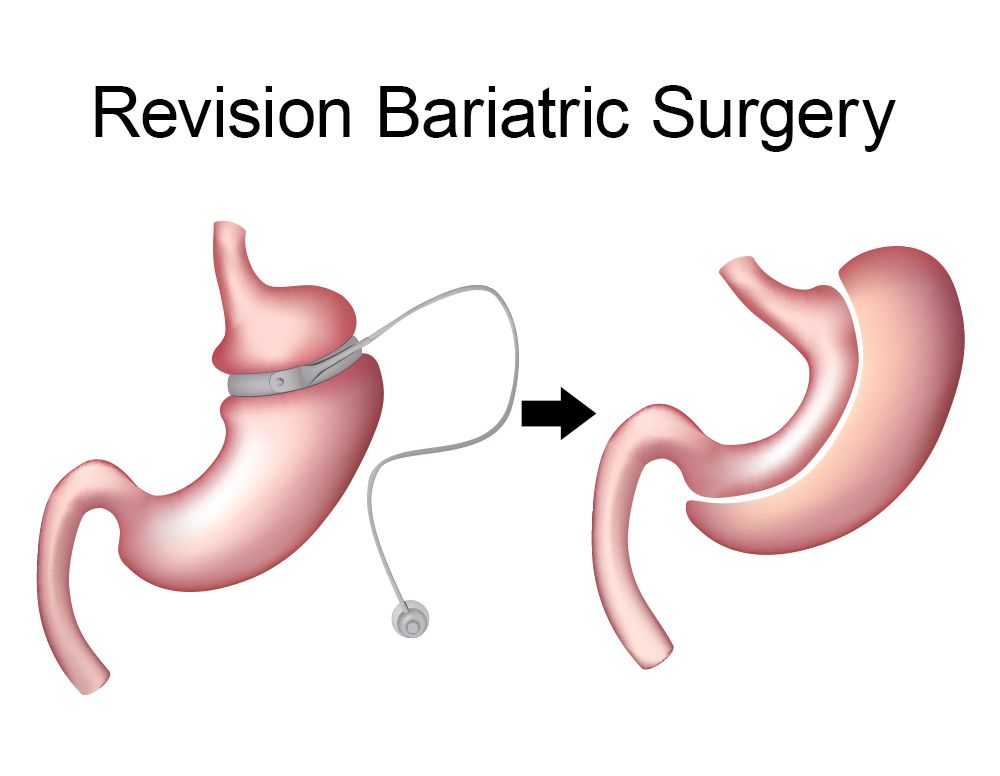
Revisional bariatric surgery is a follow-up surgery for any reason after the initial bariatric procedure. The main reasons for considering revisional surgery are insufficient weight loss with the initial procedure, complications, and weight regain. There are many options, such as converting the gastric band to a Sleeve or bypass or a Sleeve to bypass. Not all options suit everyone, so, at WA Laparoscopic and Bariatric Surgery Centre, we listen and understand before we advise you on the best procedure to meet your expectations.
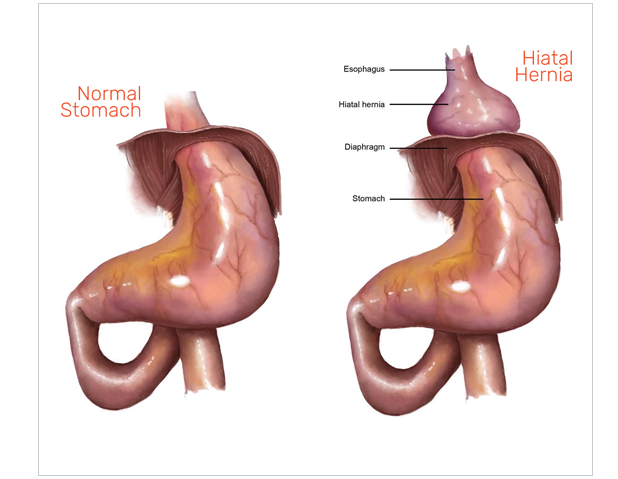
Acid reflux and heartburn are prevalent problems. In the majority of cases, lifestyle modifications and changes in diet are all that are required to control symptoms. Reflux is generally caused by the stomach migrating into the chest, leaving all-natural mechanisms to prevent acid reflux in the oesophagus ineffective. When medications and lifestyle changes prove insufficient in controlling the symptoms, it's time to take a closer look and explore alternative options for effective intervention. Don't let the symptoms hold you back any longer—take charge of your health and seek the help you need. Keyhole Surgery to repair a hiatal hernia is usually a "keyhole" (laparoscopic) procedure that is generally well tolerated. The majority of the patients can go home the next day after surgery. Surgery aims to bring the stomach back down into the abdomen and then make the hole smaller to prevent the stomach from slipping again into the chest cavity. This is usually supplemented by wrapping the upper part of the stomach around the oesophagus to recreate a valve and prevent stomach contents from refluxing up into the oesophagus. Surgery is usually safe. Some of the complications are perforation of the oesophagus or stomach, bleeding or infection. Hernias may also recur. Some of the side effects of this surgery can be some difficulty with swallowing and wind trapping in the abdomen, causing bloat. Still, most often, these symptoms are mild and improve with time.